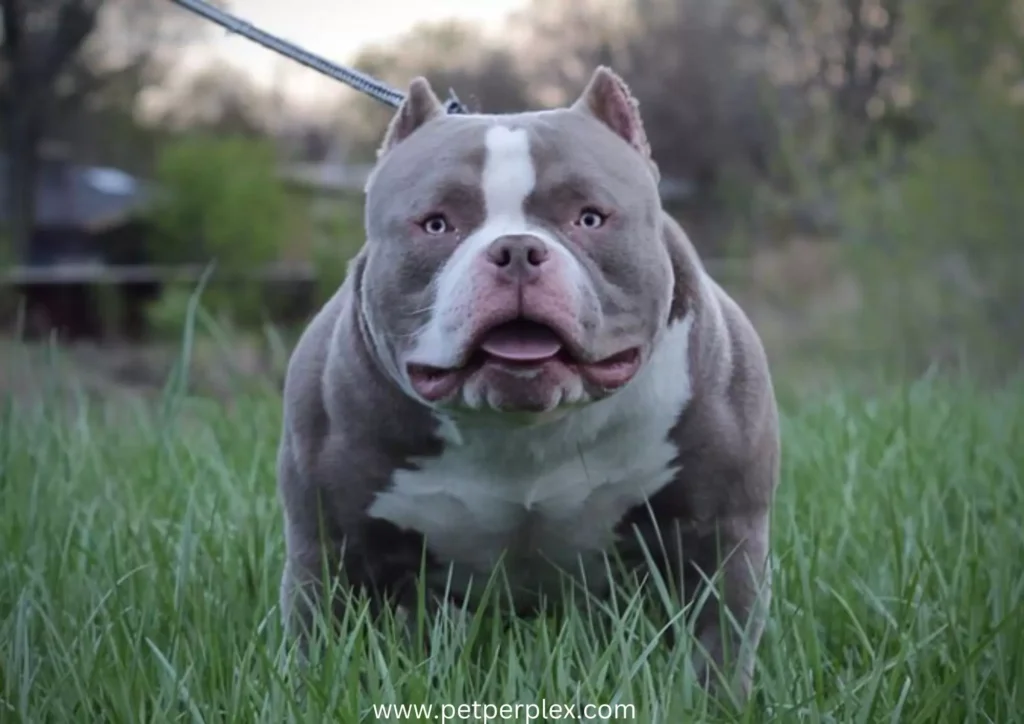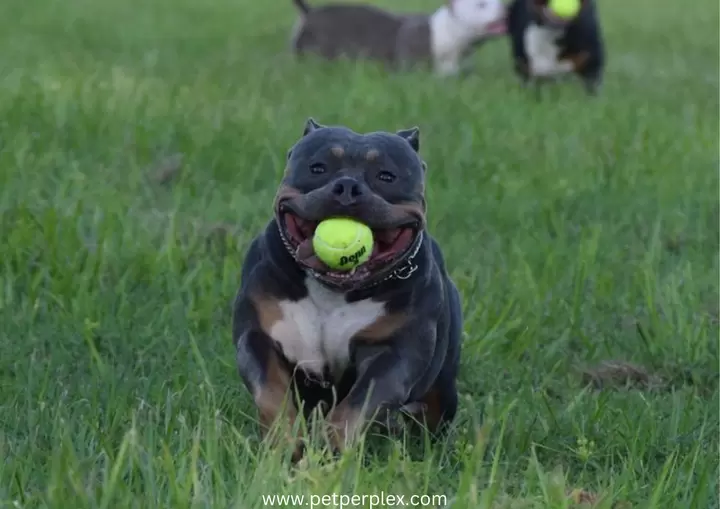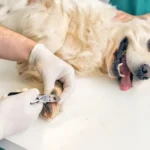The Pocket Bully is truly a pocket-sized powerhouse. As the tiniest member of the American Bully family, these miniature muscle dogs pack a mighty personality into a compact frame. Let’s take a closer look at everything you need to know about the Pocket Bully breed.
A Brief History of Breed Development:
The Pocket Bully traces its roots back to selective breeding efforts to create a smaller version of the popular American Bully. Bulldog and terrier ancestry, primarily from the American Staffordshire Terrier and American Bulldog contributed to the Pocket Bully’s development. Using established miniaturized Pitbull breeds like the American Bulldog and Miniature Bull Terrier, breeders carefully selected for smaller stature dogs possessing the bold, energetic temperaments prized in their larger relatives. First recognized as an established variety in 2010, the Pocket Bully standard calls for dogs no taller than 15 inches and weighing 18-35 pounds at maturity.
Is the Pocket Bully a Recognized Breed?
While not currently recognized by mainstream kennel clubs, the United Pocket Bully Kennel Club (UPKC) registers Pocket Bullies and works to further establish the variety as a true purebred breed. With a dedicated following and registration numbers growing each year, advocates expect formal breed recognition is just a matter of time as popularity increases.
Temperament and Personality: A Lot of Dog in a Small Package!
Despite their modest stature, Pocket Bullies have big, bubbly personalities. Driven and energetic, they thrive on physical and mental stimulation. Ever-eager to play, these pups bond closely with their humans and families. Friendly towards known persons, they can exhibit natural guarding instincts towards strangers if not properly socialized. Early positive exposure and training is key to ensuring Pocket Bullies develop as sociable companions.
Pocket Bully Size and Appearance:
As described by the breed standard, adult Pocket Bullies should stand no taller than 15 inches at the shoulder. Most typical weights range from 18 to 35 pounds fully grown. Distinctive physical traits include strong, well-developed muscles on compact bodies with large heads, broad chests, and short legs. Coat colors may be any color or combination found in the American Bully parent breed excluding blue or merle. Common hues seen are red, fawn, brindle and brown.
Pocket Bully Health and Genetics
While a generally hearty breed, certain health issues arise due to their small stature and bulldog ancestry. Conditions like patellar luxation, hip dysplasia, respiratory problems, and skin allergies require awareness and monitoring by responsible Pocket Bully owners. Reputable breeders screen breeding stock for hereditary concerns and use only genetically diverse dogs in an effort to produce healthy litters. Proper nutrition, socialization and preventative veterinary care all play a role in optimizing a Pocket Bully’s quality of life.
| Disease | Description | Recommended Management |
| Patellar Luxation | Kneecap dislocates from proper tracking in joint | Diet high in glucosamine/chondroitin to promote joint health. Surgery if severe. |
| Skin Allergies | Atopic dermatitis causes itching/hot spots | Hypoallergenic diet, baths, antihistamines under vet guidance. |
| Respiratory Issues | Brachycephalic airway syndrome in flat-faced dogs | Monitor breathing, limit exercise in heat/humidity. |
Grooming and Care for the Pocket Bully:
Grooming demands are moderate for the wrinkle-free, short-coated Pocket Bully. Weekly brushing to distribute natural oils and prevent matting keeps their coat looking shiny and healthy. Regular bathing is unnecessary unless dirty. Due to stocky builds, these dogs do best with two daily walks or play sessions to burn off boundless puppy energy. Homes with Pocket Bullies also require sturdy fencing, as jumping and digging are common canine pastimes! Proper dental hygiene through regular brushing helps prevent oral issues. Professional nail trims are best for black-nailed dogs.
Training the Pocket Bully:
As intelligent, athletic dogs, Pocket Bullies excel in performance sports like agility when motivational training methods like positive reinforcement are used. Firm, consistent handling helps establish them as well-behaved house petshttps://www.trustedhousesitters.com/. Early socialization with people and other pets is vital to curb any guarding instincts and aid in good manners. Pocket Bullies respond especially well to food reward-based techniques and thrive on meaningful daily interaction with their human families. With steady guidance, these pups prove eager students ready to learn new tricks.
Pocket Bully Costs and Ownership Considerations:
The purchase price for puppies from a reputable Pocket Bully breeder averages between $1000-3000 depending on bloodlines, size, coat color, show/pet quality and regional market trends. Factor in supplies, DNA tests, vet exams and a pet deposit (if renting) bringing initial outlay to over $1000 minimum. Month to month household costs involve quality foods, occasional toys/accessories and standard preventative care. Potential major medical procedures or Pocket Bully allergy treatment could run upwards of $2000 on average too according to statistics from local veterinarians. Comprehensive pet insurance provides peace of mind against unforeseen veterinary bills.
FAQs:
Are Pocket Bullies high-maintenance dogs?
While Pocket Bullies have moderate grooming needs like weekly brushing, they are easygoing as far as coats go since they do not shed heavily or require professional trims. Their stocky frames also mean fairly low exercise demands of one to two walks per day. Overall, Pocket Bullies prove low-fuss companions well-suited to busy households.
How much space do Pocket Bullies need?
Due to their small size and high energy, Pocket Bullies thrive in homes with access to a securely fenced yard. However, they can certainly adapt to apartment living as long as provided daily activity like walks, playtime, and mental stimulation. The minimum space recommendation is access to a yard at least twice the dog’s length. But with ample exercise, Pocket Bullies prove gratifying pets regardless of living quarters.
Are Pocket Bullies good with children?
Pocket Bullies tend to bond closely with all members of their human family. But as with any breed, proper early socialization is necessary when introducing them to children. So long as not roughhoused with or provoked, Pocket Bullies typically show patience around kids. Their small stature also means less risk of accidental hurt. With supervision and training from a knowledgeable owner, Pocket Bullies often make delightful canine companions to respectful children.
Conclusion:
The mighty Pocket Bully proves that big courage comes wrapped up in a tiny package. Despite their small stature, these dogs embody boundless verve and vigor. With compatible owners matching their high activity needs and affectionate natures, Pocket Bullies thrive as cherished family companions. Their bold bravery and dependable dispositions earn them a place in homes seeking a pint-sized protector and playmate. Although not without some breed-specific health concerns, responsible Pocket Bully fanciers appreciate these dogs for their stalwart yet tenderhearted temperaments and commitment to those they love.

Hi, I am Mick Andrew. I am a teacher and a blog writer since 2017.









